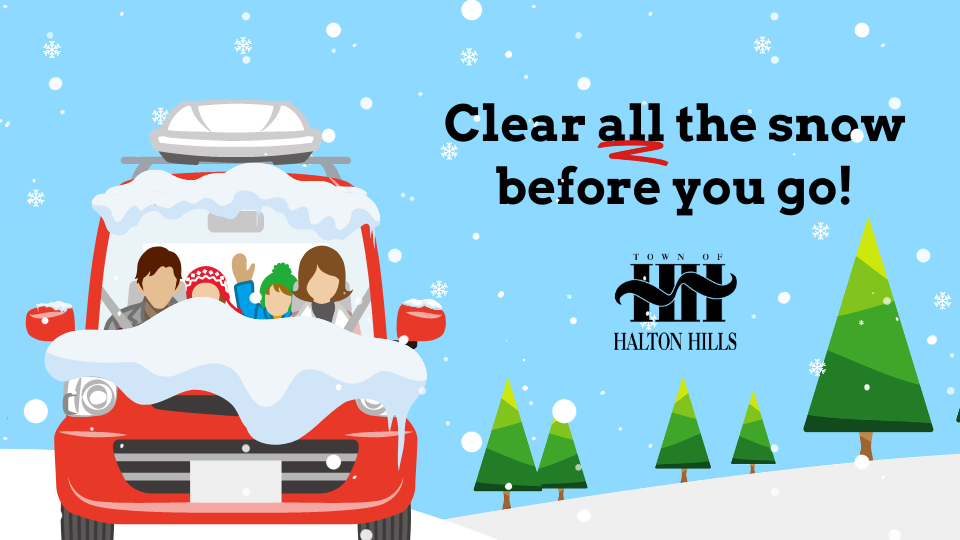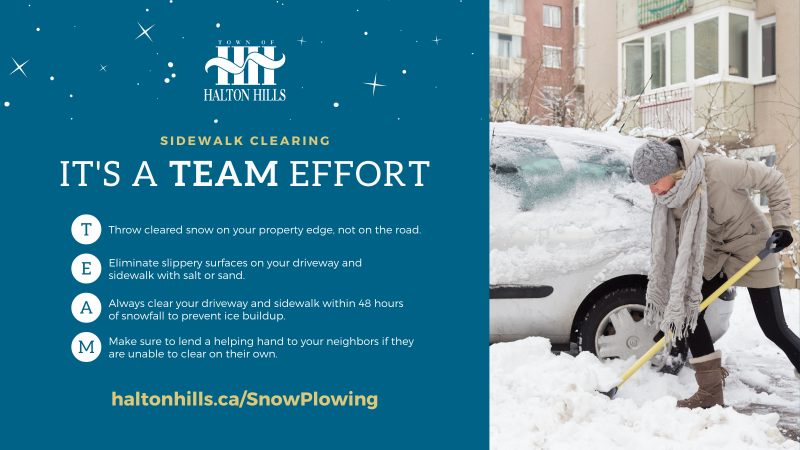.png)
A Salty Situation - Protecting Our Water in Halton Hills
While road salt continues to be an effective and economical winter maintenance product, it also has undesirable effects. These include damage to infrastructure and vehicles, environmental impacts on land and water, and potential impacts to ground water. By practicing 'Salting Responsibly,' we can ensure the safety of our roads, walkways, and parking lots while also mitigating impacts to our environment and drinking water sources.
Environment and Climate Change Canada (ECCC) released a “Code of Practice for the Environmental Management of Road Salts” (Environment and Climate Change Canada, 2004). As part of the Code of Practice, Halton Hills maintains a Salt Management Plan (SMP) and reports status annually.
The Clean Water Act, 2006 was established to guarantee clean, safe, and sustainable drinking water for Ontarians by safeguarding sources of municipal drinking water, such as lakes, rivers, and wells. Source Protection Plans (SPPs) include policies that suggest or mandate actions to mitigate activities identified as threats to drinking water. Halton Hills is part of three Source Protection Regions, each with SPPs approved by the Ministry of the Environment and Climate Change.
Through its Salt Management Plan, the Town adheres to best practices, including:
Direct Liquid Application
What is it?
- Application of a brine solution directly on the roads surface.
- Brine is applied to designated roads in advance of a winter event, and when conditions are favourable.
* Salt Brine: A 23.3% sodium chloride solution.
Why we do this?
-
Prevents the accumulation of black ice, frost, and packed snow.
-
Helps to prevent snow from bonding to pavement.
Tips on How to Salt Responsibly Around Your Property
Road salt works well to melt ice and snow around your property but it also has long-term impacts on the environment. Check out these tips to clear your driveways, walkways and sidewalks and keep safe while using less salt!
-
Shovel or plow snow before applying salt. Salt will not work to melt the snow.
-
Spread salt sparingly and evenly, but remember, a little goes a long way! Using more salt won't yield better results. If you see salt left on the ground after the snow and ice clears, you are using too much. A few tablespoons of salt for a one-metre square area should do the trick.
-
Use alternative products to salt such as, grit, sand, or non-clumping kitty litter to help create traction.
-
Keep storm drains clear to help melting snow drain away from your property.
- Ensure your salt is contained in a proper container with a lid to prevent rain and snow from entering.
|
- What number do I call if I have a concern?
-
When will my street be plowed?
-
The Town of Halton Hills priority for plowing is to first clear all arterial and collector roads before clearing the residential streets. When all streets need plowing, the aim is to complete plowing within 24 hours after the end of the storm. Heavy snowfalls or successive storms can sometimes extend this period beyond 24 hours.
-
Why isn't my sidewalk cleared?
-
The Town's Sidewalk Snow Clearing By-law sets out the streets where the Town clears the snow and ice from over 160 km of sidewalks on arterial and collector roads and streets with schools. The Town of Halton Hills Property Standards By-law 2008-0137 states that property owners of multi-residential, commercial, industrial and institutional properties are required to clear snow and ice from sidewalks on their property.
-
Can you stop my neighbour from pushing snow onto the road?
-
Why has the snow plow left a windrow of snow across my driveway?
-
It is the Town's responsibility to push the snow to the side of the road and create a clear path for vehicular traffic. To reduce the amount of snow in your driveway, clear snow toward the right side of your driveway (facing the street). This will reduce the amount of windrow left at the end of your driveway.
-
Why is my street only sanded and other streets are salted?
-
To achieve bare pavement, salt must be applied at the onset of snow so that a layer of salt brine is maintained between the road surface and accumulating snow (to prevent bonding). In order to provide this level of service to residential roads, significant increases in equipment and salt would be required, with increased costs and environmental impact. The town as well as other Canadian road agencies are required to have a Salt Management Plan to manage salt use and minimize environmental impacts. It would be unusual for a municipality subject to winter climate conditions, such as Halton Hills, to consider a snow packed road surface as unacceptable for local residential roads.
-
Can you clear the snow banks at street intersections that are presenting a safety hazard?
Can the Town clear the snow from the fire hydrant on my street?
-
Do we have a snow clearing program for seniors?
-
The Town does not have a snow clearing program for seniors. However, seniors and persons with disabilities who cannot arrange their own service provider can call Links to Care at 905-873-6502 in Georgetown, or 519-853-3310 in Acton, who will look for a contractor to remove snow at the resident's expense.
-
The snow plow has damaged my mailbox. Can it be fixed?
-
Yes, notify Public Works. Once a call is received, a Request for Service is made up, and staff will schedule the repair or replacement.
-
Can you repair the sod damaged by the sidewalk snow plow?
-
Yes, notify Public Works. In the spring, Town staff will topsoil and seed areas where the plow has caused damage. However, it is the homeowner's responsibility to care for the area, once it has been seeded.
|




.png)

.png)